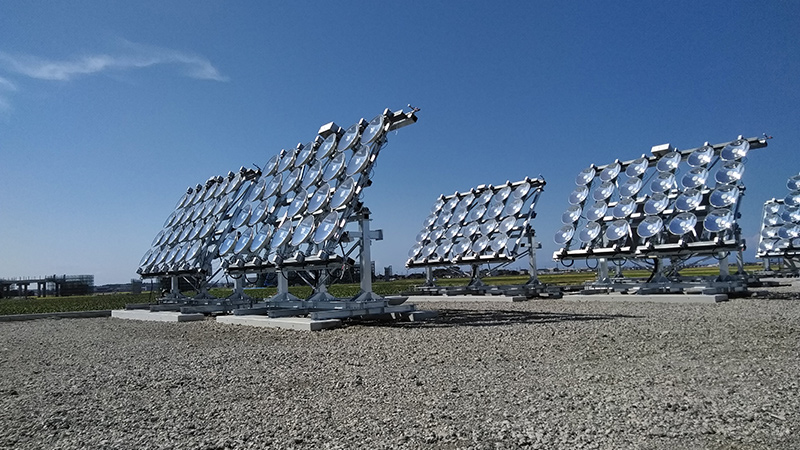Stay Up to Date
Submit your email address to receive the latest industry and Aerospace America news.
The Terrestrial Energy Systems Technical Committee works to advance the application of engineering sciences and systems engineering to the production, storage, distribution and conservation of energy for terrestrial uses.
The rapid growth of the aerospace sector inevitably has an increasing effect on the environment. For decades, the aircraft propellant we use has almost been taken for granted, and while fit-for-purpose testing has been rigorously applied, the particular composition of jet fuel and its varying performance, based on its inherent characteristics, has only come under scrutiny in the past few decades. Much of the work on alternative and renewable fuels to date stems from the need to avoid compromising safety, operability, overall emission profiles, hardware readiness, cost and reliability as these fuels are introduced.
The Low Carbon Combustion Center at the University of Sheffeld, United Kingdom has been working on fit-for-purpose performance testing of alternative and novel fuels for more than a decade. Currently, total aromatic content is directly controlled by fuel standards (including polycyclic aromatic hydrocarbons), but not different aromatic species. The aromatic content of aviation fuels is primarily responsible for the generation of smoke, unburned hydrocarbons and the infrared radiation of the exhaust stream. Increased smoke is usually associated with increased flame radiation, which in turn may reduce hot-end life by increasing surface temperatures and abrasion by carbon particles. Conversely, current systems require the presence of aromatics to ensure system compatibility and energy density. A team at the LCCC is focused on the aromatic species type and its concentration in fuel as a fundamental step toward crafting fuel to optimize performance regarding reduced smoke emissions while preserving system compatibility. In 2017, the LCCC team worked on testing a wide range of aromatics and blends with an aim to find the optimum aromatic type. Results produced by the team in May and June could provide a significant step toward optimizing fuels for the future. Aromatic-free alternative feedstocks and production pathways are now available and require blending with conventional fuels or the addition of synthetic aromatics.
Compared with conventional aviation fuels, renewable jet fuels are intended to be more eco-friendly, which means lower particulate matter, less smoke, less carbon dioxide and less nitrogen oxides will be generated. However, the absence of aromatics or smaller amount of aromatics may cause elastomer seal swell performance issues and compatibility problems in the legacy hardware. For this reason, aromatic content is now fixed at a minimum of 8 percent in synthetic fuel blends to keep fuel within experience norms. However, results produced in 2017 by the LCCC team could lead to steps being taken for even lower aromatic content in the fuel or optimization of aromatic types.
All these benefits could be crucial for future fuels and engines by helping take a big leap toward the development and implementation of improved performance fuels in the future.
In the area of solar and thermal power, Actree Co. Ltd. in Japan, under a grant from the New Energy and Industrial Technology Development Organization, or NEDO, in September started field testing a tracking concentrator type solar energy recovery system that realizes combined solar power generation and solar thermal heat recovery. The system consists of parabolic reflectors arrayed in units consisting of four reflectors by six reflectors. The system is equipped with GPS to direct columns of units toward the sun, resulting in high etendue, or concentration, efficiency. The system efficiency goes up to 65 percent, combining power generation at 25 percent efficiency and heat recovery at 40 percent efficiency.
In the ongoing field testing, eight units generating a total of 13 kilowatts are set up in the head office location, and performance, durability and suitability of a remote control system for maintenance have been tested and validated. On the validation of the remote control system, Softbank Co. Ltd. plans to participate in this testing. This small system, packaged with the remote control system, facilitates efficient utilization of renewable energy in mountainous areas and outlying islands.
Contributor: Ryo Amano
Bhupendra Khandelwal leads a combustion and emission team at the Low Carbon Combustion Center in the U.K. that tests alternative fuels and blends.
Related Posts
Stay Up to Date
Submit your email address to receive the latest industry and Aerospace America news.




